We all value time and always try to manage it efficiently. Since SEOs often have unbelievable amounts of data to analyze, they spend a lot of time processing and analyzing the SEO reports. Here comes the need to implement the API technology. Add the fact that API can save you 23 hours per month = 276 hours per year for a minimum budget! Let’s see the details 🙂
I want to remind you that we have our own Backlink Index. At the moment, it consists of 1 trillion backlinks. We also compared it with the Ahrefs index, and the results turned out to be impressive.
Recently, we increased the number of Backlink analysis API methods that you can use to crawl referring pages, domains, and anchors and receive reports in JSON format. The backlink documentation is based on Postman, a program for running APIs.
What is API, and What Advantages it Offers for Backlink Analysis
API (Application Programming Interface) is a method of obtaining data that allows users to access specific functions or components of a tool without using the interface.
The API lets you query the Serpstat server and retrieve data directly. Serpstat API covers Website Analysis, Keyword Analysis, Site Audit, and Backlink Analysis. We also provide crawling options as a service:
2.Search Volume Crawling.
It will allow you to create your own Serpstat directly on your site. The crawler checks the content of the search results, selects data according to the specified criteria, and sends it to you in JSON format within an hour. At the same time, you can monitor the data you need with hardly any restrictions.
Let’s take a look at some of the key benefits of using APIs:
- Possibility to upload and analyze a large amount of data
- Automation of SEO routine processes
- Saving time for the development of additional integrations
- Creation of custom reports.
The backlinks API provides capabilities for in-depth URL analysis, including obtaining the top 100/10 keywords in search queries and counting the number of backlinks for a specific URL.
It is often used for large projects. Additionally, the API allows for retrieving anchor texts of inbound links. It offers tools for domain quality analysis, helping to quickly and almost automatically filter out over 95% of low-quality donors.
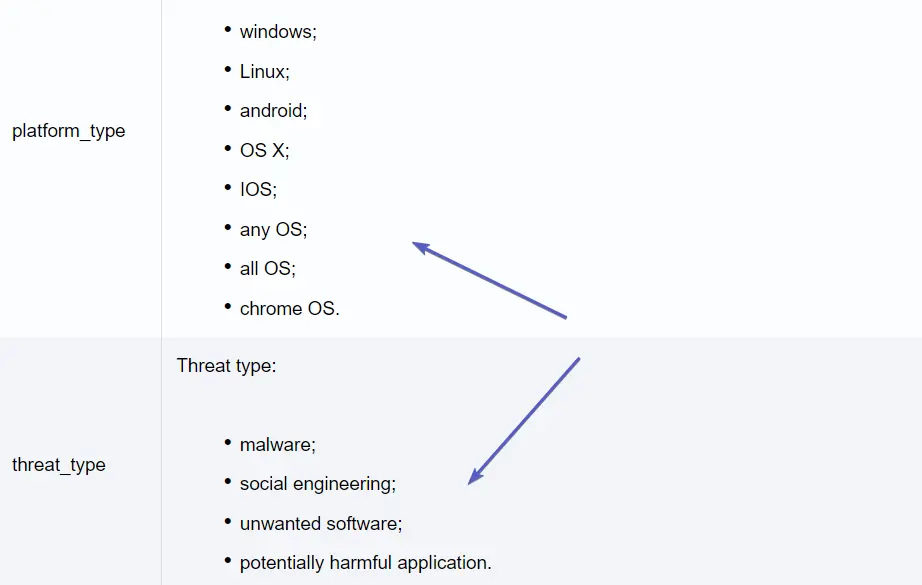
The tool provides information on:
- Visibility
- SEO Traffic
- Top 100 keywords (including position distribution 1-10, etc.)
- SDR (Serpstat Domain Rank)
- Number and dynamics of referring domains/subdomains
- Inbound links (segmentation by dofollow/nofollow)
- Referring IP addresses
- Outbound links and much more
This information helps you evaluate your current backlink profile and avoid link-building mistakes.
How do you start working with API?
I’ll show you how to work with the API methods:
Follow the link to create a free Postman account: https://www.postman.com/
You will use the code samples from the Serpstat API tutorial.
Add the address where you want to send a request. In our case, it’s the URL of the Serpstat server.
Then confirm that you are a Serpstat user: enter your personal token. You can find it in your profile:

Copy the token and enter it in the server URL field instead of {{token}}. Line: http://api.serpstat.com/v4/?token={{token}}.

Want to learn how to automate your SEO routine tasks with the Serpstat API? Book a personal demonstration, and our experts will help you 😉
How do You Analyze the Backlinks of Your Website with Serpstat API?
#1 Request
To send a request to Serpstat servers, you should specify a method that you want to use to generate the report. This example shows how to apply the .getNewBacklinks method:
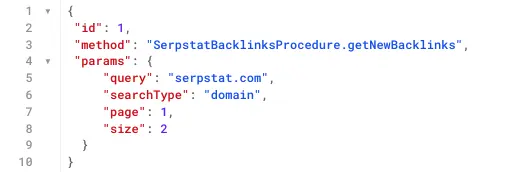
- method shows what data we will get in the final report. In this case, it’s about new referring links
- query is a domain or page that you want to analyze
- searchType: choose “URL” for the URL analysis or “domain” for the domain analysis
- page & size determines the pagination of the report. In this example, we get a page with 10 lines in the report.
# 2 Report
This is how the report for the query .getNewBacklinks looks like:

- url_from: referring page
- url_to: landing page
- nofollow: follow/nofollow.
- link_type: href, image, redirect, frame, rss, alternate, form, canonical
- links_ext: shows how many external links a page contains shown in the Url_from field
- link_text: anchor text of the link (if available)first_seen: when the link was first found
- first_seen: when the link was first found
- last_visited: when the link was last found
- domain_rank: Serpstat domain rank.
Available API Methods of Backlink Analysis
There are currently 20 Backlink Analysis methods that correspond to the reports in the Serpstat interface.
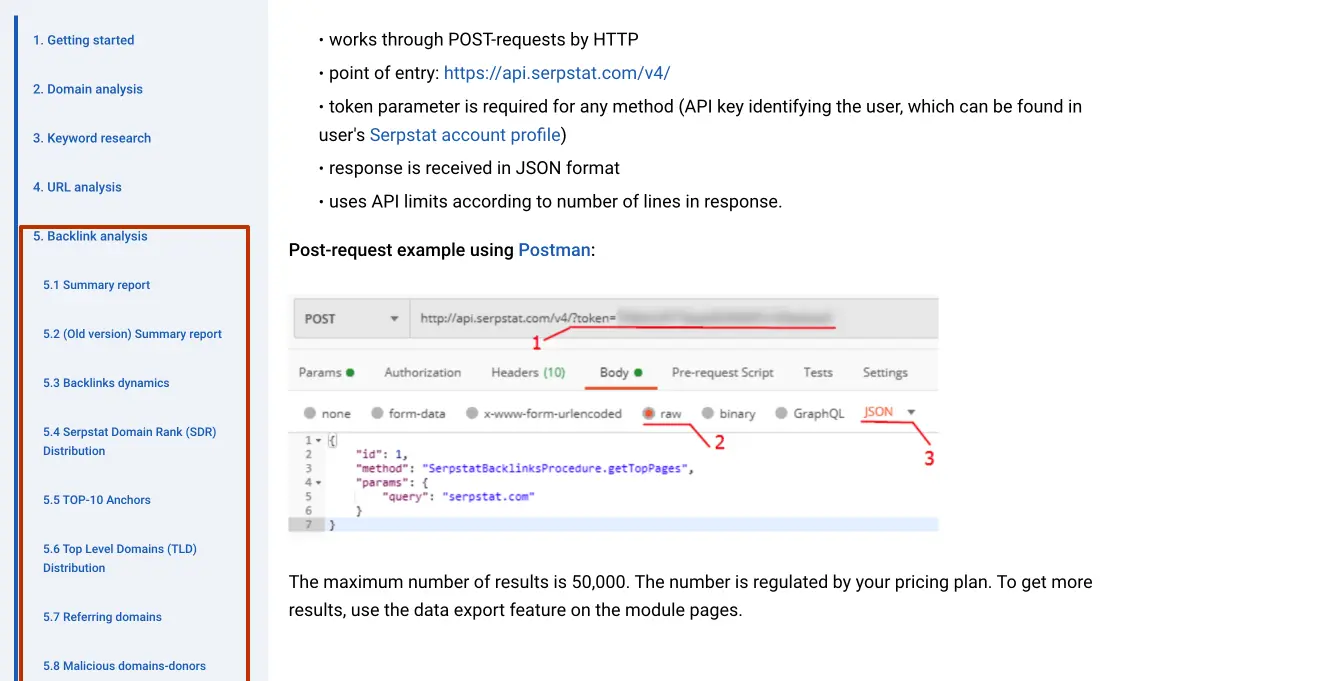
Below are:
- Summary reports allow you to find data that is available in the Overview report:

- Serpstat Domain Rank (SDR) Distribution
- SerpstatBacklinksProcedure.getNewBacklinks and SerpstatBacklinksProcedure.getLostBacklinks allows you to analyze new and lost backlinks for a URL or domain
- SerpstatBacklinksProcedure.getRefDomains provides data for referring domains for a URL or domain.
- SerpstatBacklinksProcedure.getTopPages displays pages of your domain that have a maximum number of referring domains.
- SerpstatBacklinksProcedure.getOutlinks parses outbound links from your site.
- TOP-10 Anchors gives you a list of keywords used as anchors for checking website backlinks. The data set is similar to the Anchors report.
- Links Intersection (a list of backlinks from intersecting donors).
- Malicious donors/pages and much more.
We also have API methods for other Serpstat tools as well as SDK scripts that work with our APIs.
We also have API methods for other Serpstat tools as well as SDK scripts that work with our APIs.
How to Use API via Postman: Simple Steps
In conclusion, I want to show you simple instructions for using the API via Postman. It will be useful for those who were inspired by our tools but have not yet tried working with the API.
Follow these simple steps and upload data at lightning speed:
First open Postman. Both cloud and desktop software are free.
Next, run a new request:
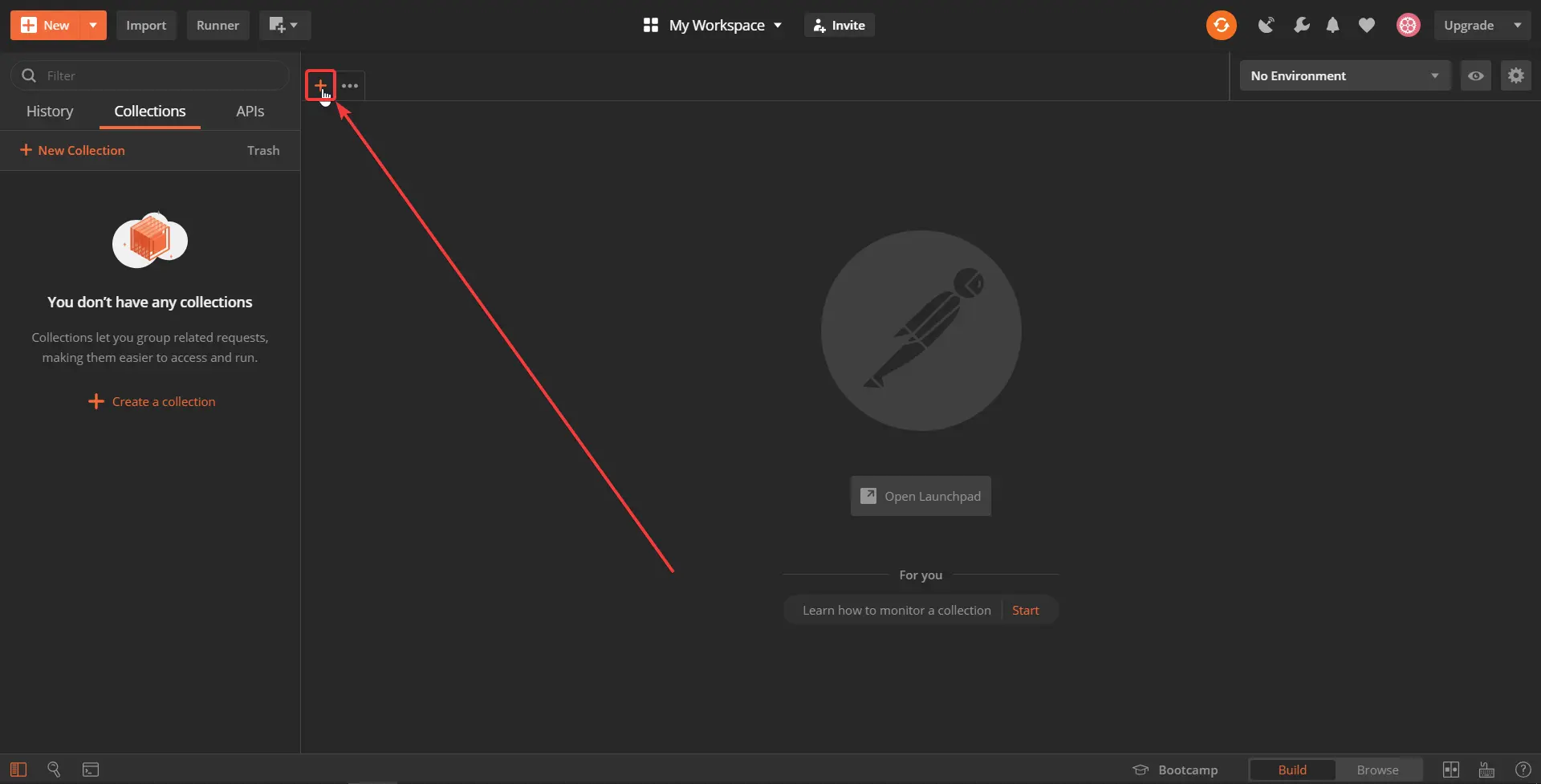
Next, we proceed to configure the request: type of request — POST, in the tab body, choose raw, then — JSON.
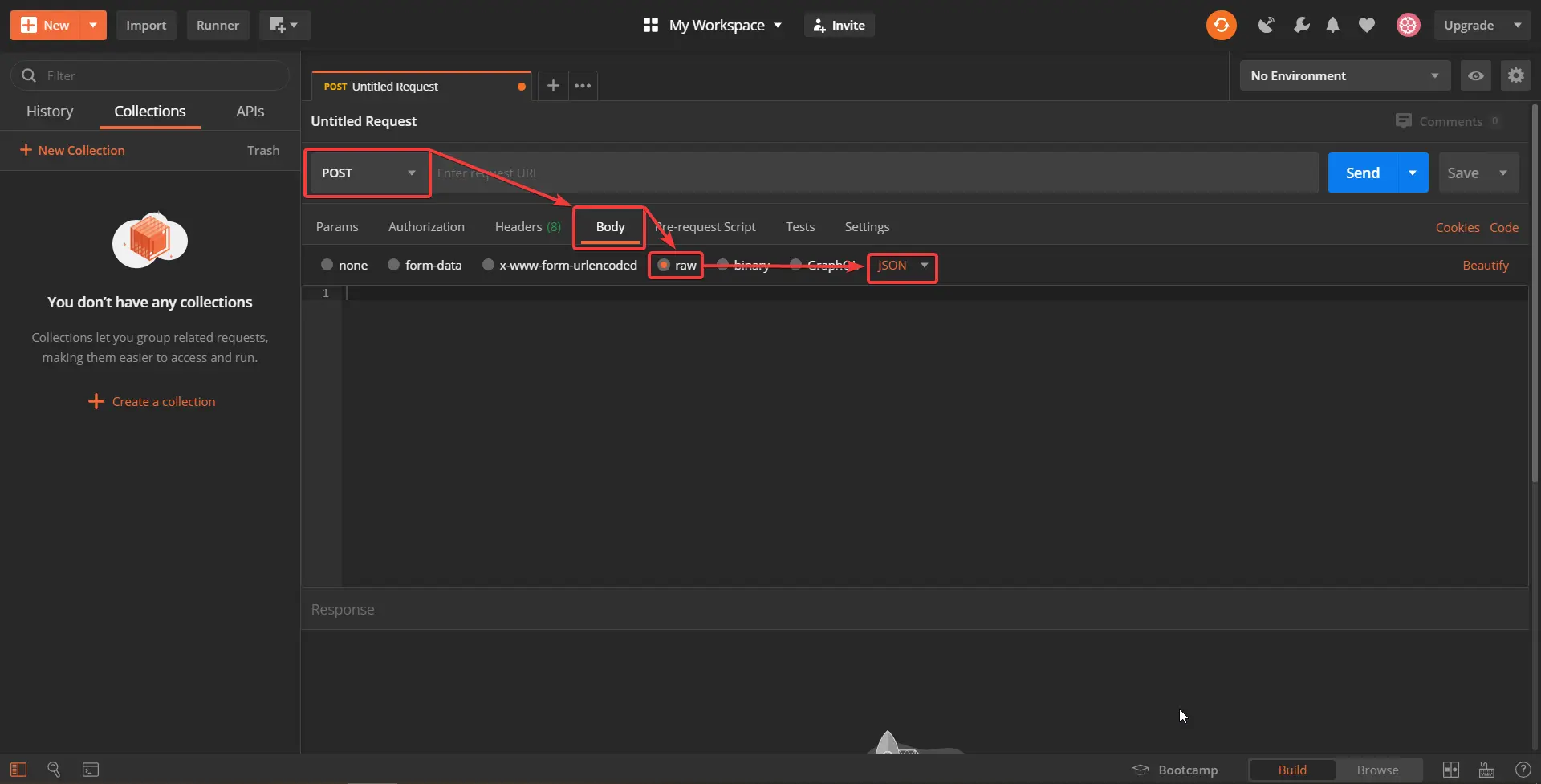
Fill in the request address and insert your token.
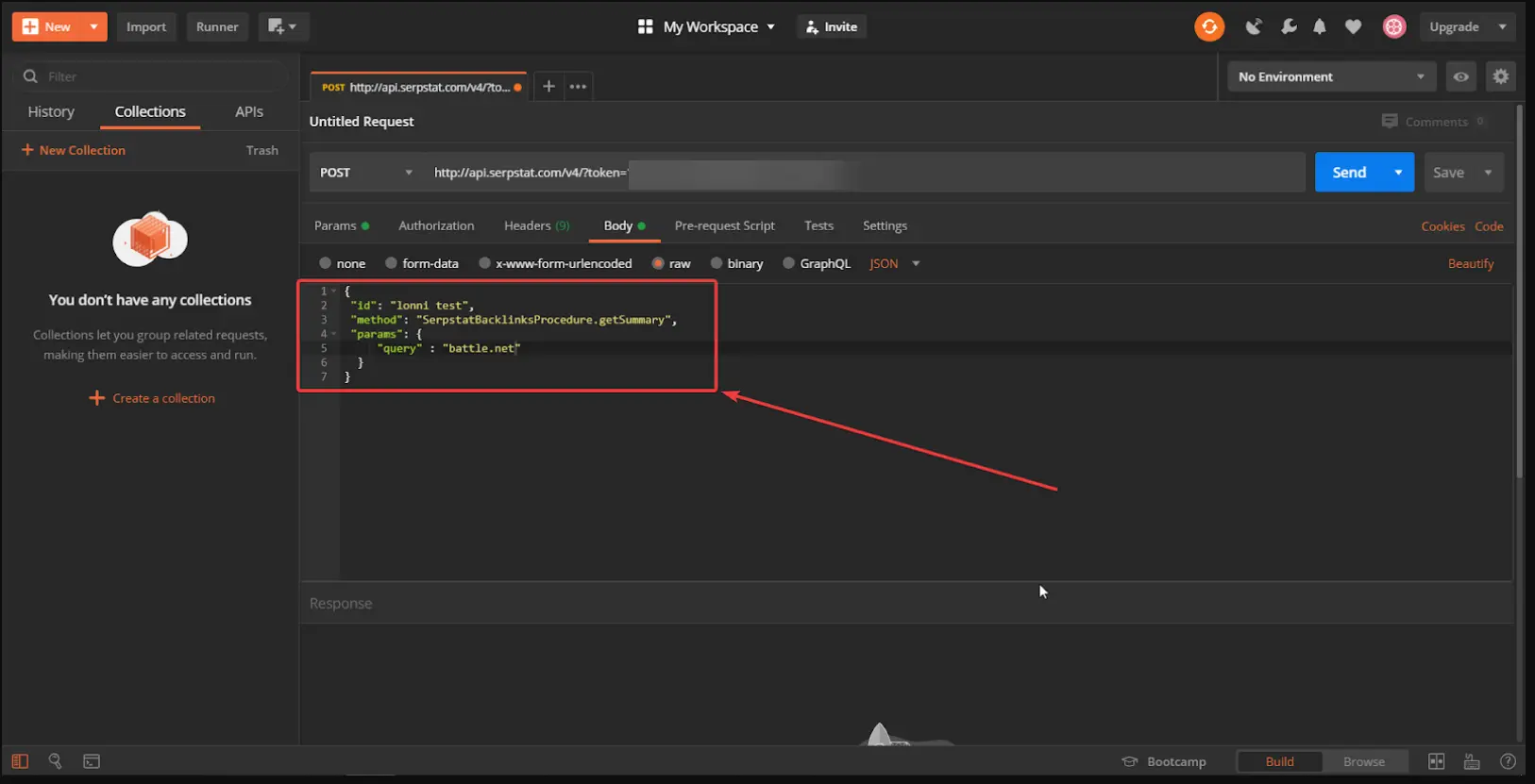
Next, fill in the request body. I will show the process by using the Summary report by domain (getSummary).

Send a request and get the result:
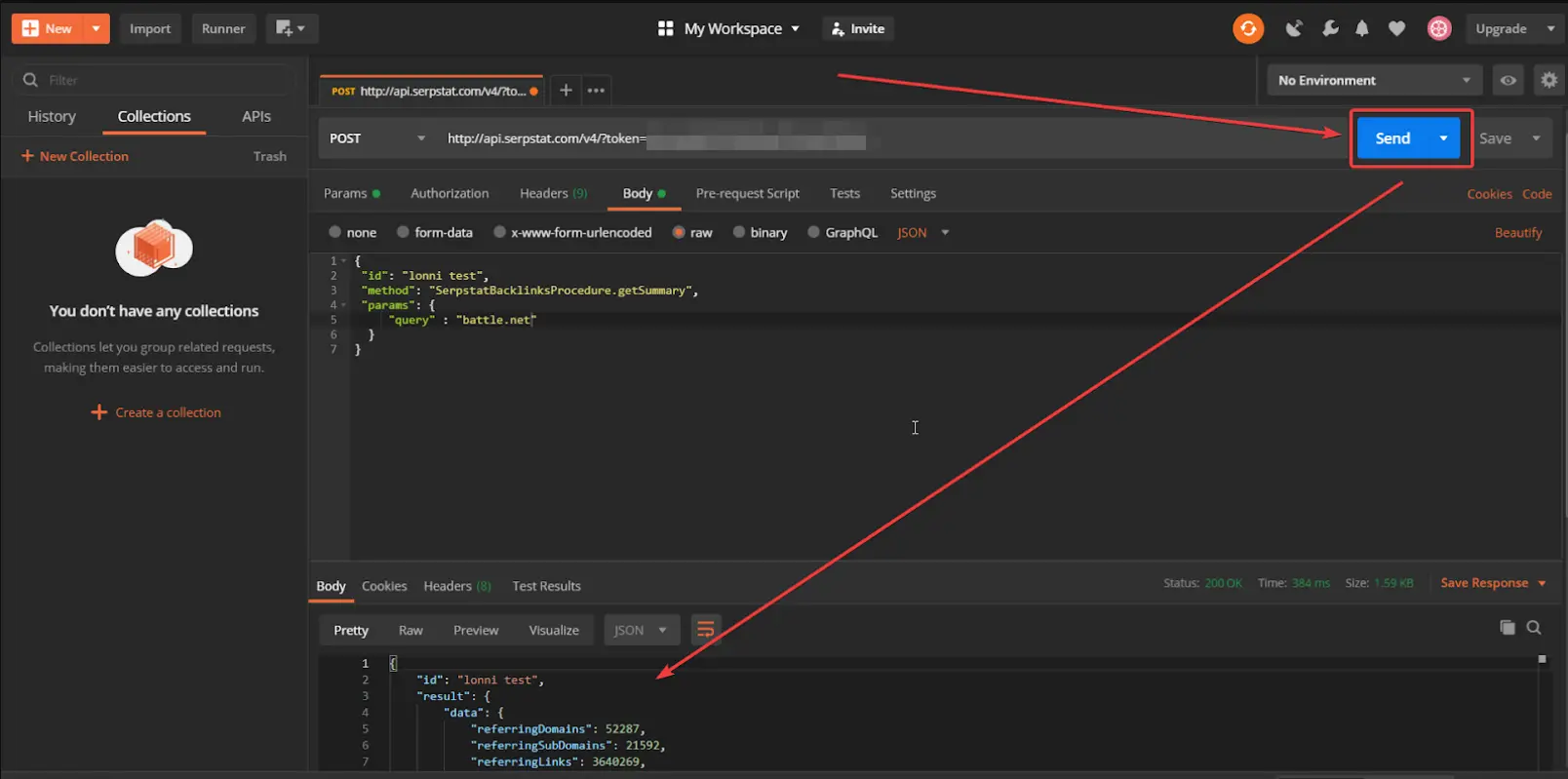
Whether you are a seasoned API user or not, this short guide will make your SEO routine much easier, especially if you need a fast backlink analysis. Please follow the updates in this article for more Serpstat API capabilities.
[ad_2]
